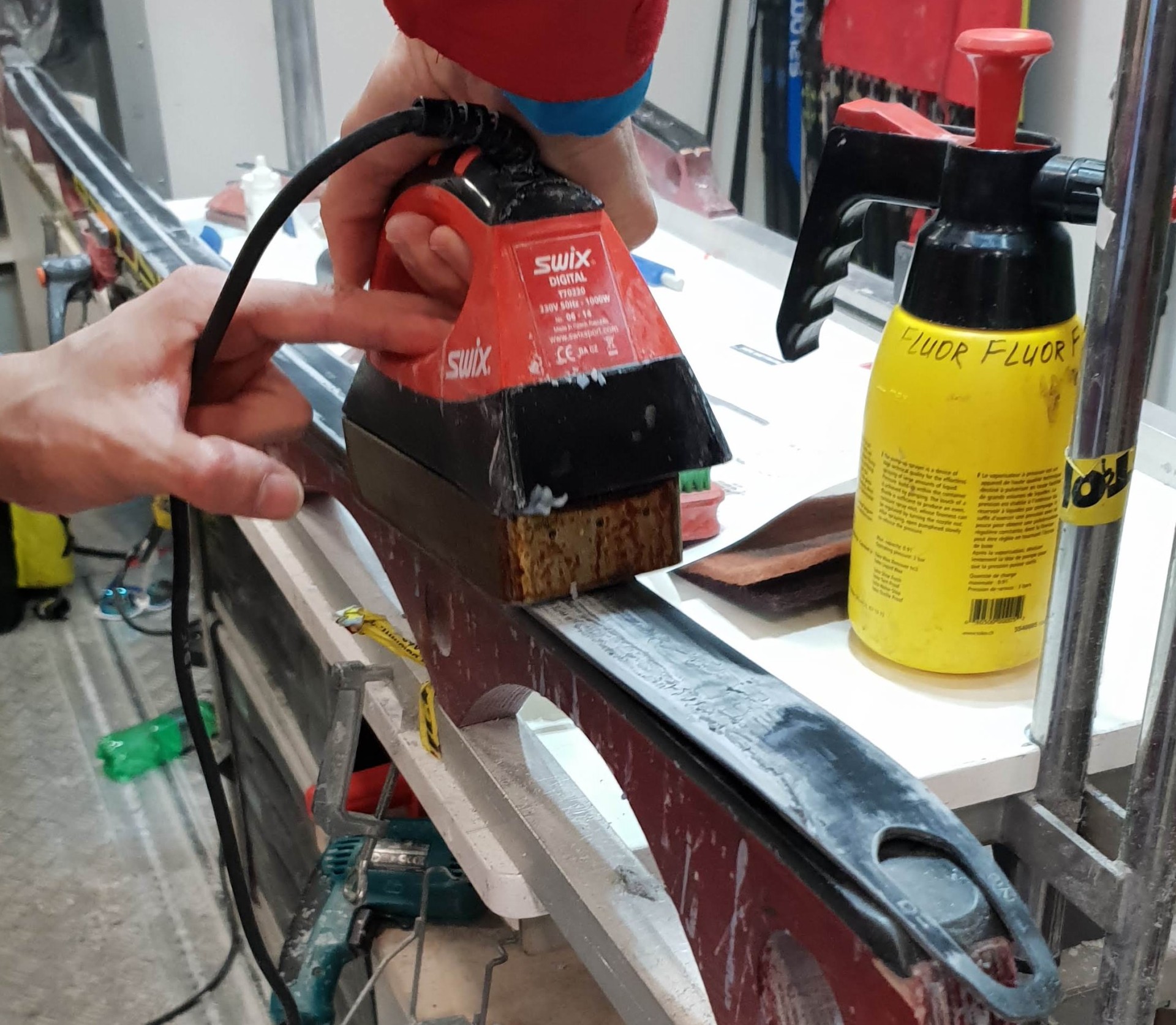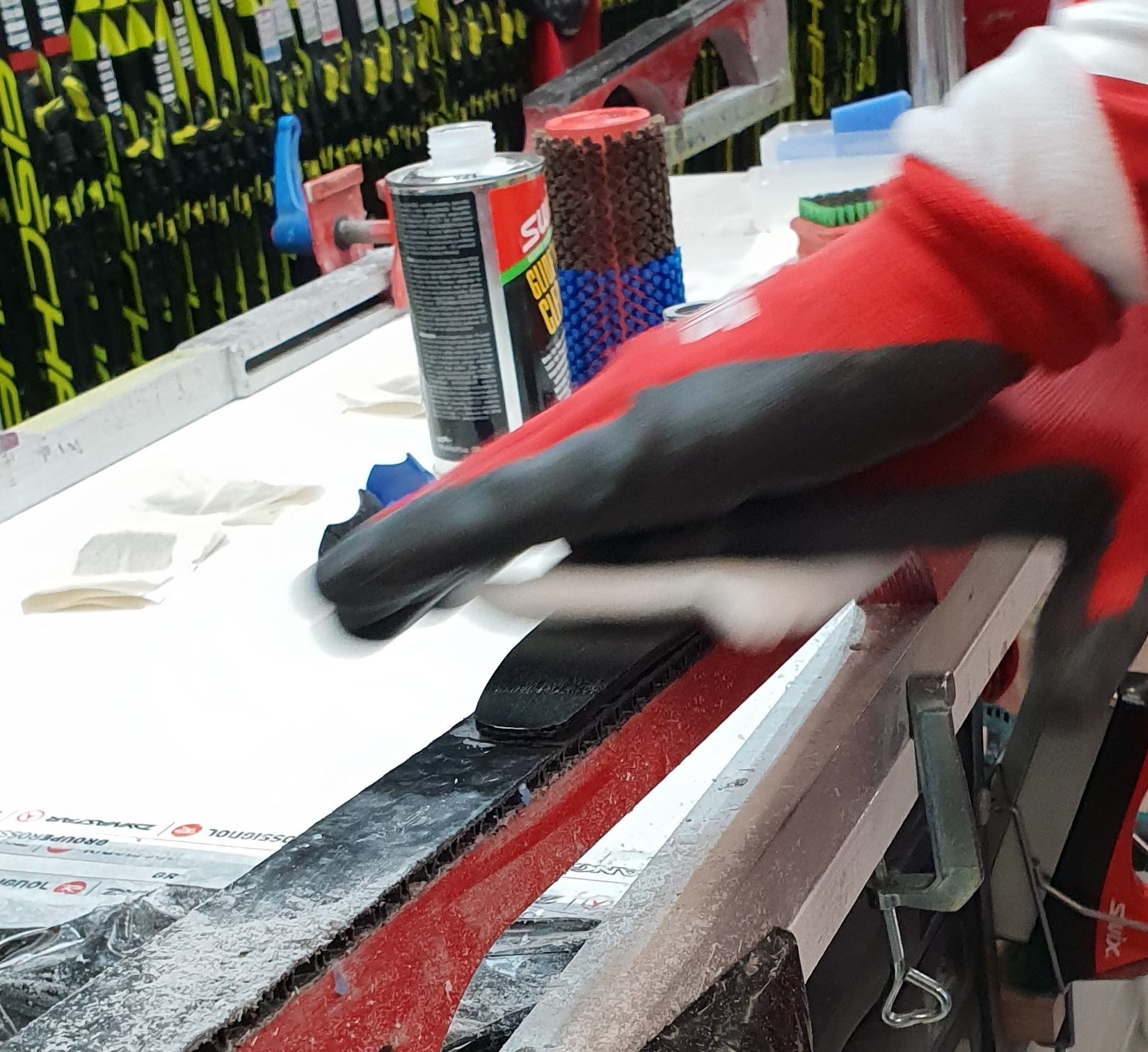
…We all know that in skiing two things matter: how your body behaves – and how do your skis. Body behavior & any enhancement of thereof are ever tightly controlled by anti-doping rules these days. But when it comes to skis – there’s no limit as to what you could do to make them run faster as long as you stay within FIS- officiated length and shape restrictions.
As one xcski insider puts it “if we learn tomorrow that gilding of skis with 24 carat gold helps the glide – we shall start doing that”
Which means evolving from “just flouro” ( now known as LF) to high flouro to – for those who could afford them – expensive super-fluorinated waxes, powders and emulsions .
And that’s where the problem is. We shall spare you winding explanations regarding semi-fluorinated and fully fluorinated alkanes , short-chain PFASs vs long-chain PFASs and other stuff that no doubt fascinates an 8-grade chemistry student living inside every one of us ( hardly!)

The POPFREE Ski Goes Global project, the guys who are campaigning for the ban of flouros from skiing, do the best & the most concise explanation of what is the issue there
“Highly fluorinated substances, so-called PFAS, are used in many consumer products because of their ability to repel water, dirt and grease. But they are very difficult to break down and therefore accumulate in nature, posing a great environmental and health risk. In skiing, there is a direct exposure risk of these substances during ski preparation and waxing, but there is also a spread of these substances in the environment during skiing…”
So, clear – harmful for waxers and harmful for environment. Let’s ban it quick!
Well, that’s not how it worked so far. Morever, the fact that high-flouro is no friend of your health or that of the environment has been established at least a decade ago – and since then only more efficient, stronger HF solutions appeared on the market. What gives?
One problem , proponents of flouro ban admit, is that ” in certain conditions there are no solutions today offering the same glide”
But even that is not a big challenge – in athletics they had banned farther flying javelins and nobody stopped, you know, throwing them javelins as a favorite pastime. Because they not only redesigned javelins – they are checking compliance, fast & easy.
With flouro ban the issue is that there is still no reliable, cheap, transportable solution to check every athlete’s skis right before the race.
Says Joel Svedlund, project manager with Peak Innovation and one of the organizers of The POPFREE Ski Goes Global project
” The testing method, SkiFT, is a sampling method where you take samples before the race and send to a lab for analysis. The method is today still at pilot stage, and will continue to be verified and fine tuned…. At this point the sampling materials are within €10-20 and the sample process takes no more that 1-2 minutes. The analysis of the samples costs about €100 a piece and takes no more than a week including transport, 2-3 days if very close to the lab.”
To us one week, €100+ / pair of skis test does not quite sound like a ready-to-roll solution to check a non-fluoro compliance even at the FIS World Cup stages – never mind lower level races.
But the day is young and “stakeholders”, as The POPFREE Ski project calls them, form an impressive list: the get-together in Stockholm featured, among the others, representatives from Swix and Vegard Ulvang, the overall boss of international cross country skiing.
While everyone could probably get on board with flouro ban in skiing ( none of the team leaders we asked went to defend the use in principle), everyone wants to make sure the competitions are fair and nobody is , well, cheating.
There are two ways to achieve that:
A. Restrictive: develop aforementioned flouro presence test that will be fast, cheap and reliable.
B. Positive: develop non-flouro waxes that are as good or better than flouros in all spectrum of conditions, including wet snow. Those gonna be expensive – but hardly outside the budgets of teams who could afford million-dollar wax trucks.
The POPFREE Ski project are also talking about third path – raising awareness and basically teaching skiers that PFAS are bad and, therefore, shameful to use. We are openly skeptical it would work and that such an enlightenment will visit upon ambitious skiing masses any time soon. But the effort is noble.
We at the Daily Skier plan stay on this topic and to bring you more on what is being done in both developing tests on presence of harmful flouros – and in new non-flouro waxes.
Stay tuned.

Related Posts
- Ramsau When There Is Unseasonably Hot
- Madshus, Part 2 – Your Questions Answered. Some Of Them, At Least
- Let’s talk about Zihi. Because their motto is Best training plan is one you can do – and we dig that attitude
- Yelena Vyalbe: For Olympics 2026 We Will Prepare In Caucasus Mountains Rather Than Alps
- Ban On Fluoro Wax Postponed?
